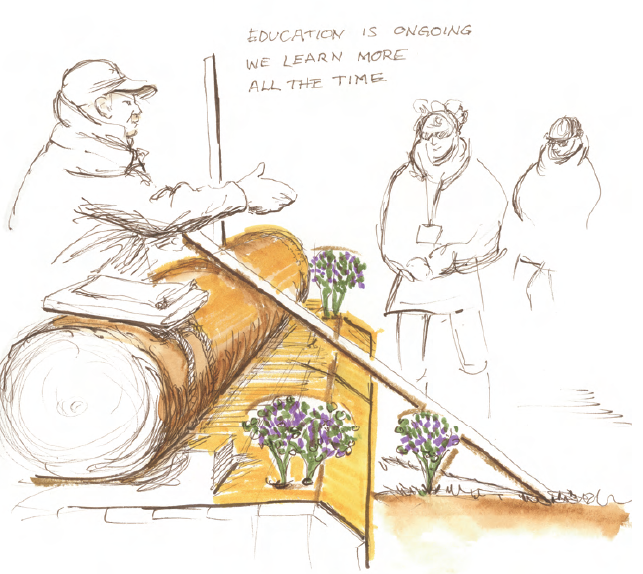The Role of Cross-Country Decorating and Ground Lines: An Excerpt from Cross-Country Completion Considerations

These excerpts were published with permission from Cross-Country Completion: Considerations About Jump Decorating by Janine Preece McClain. The illustrations are by Janine Preece McClain and Leslee Preece. Cross-country decorating plays a significant role in a successful cross-country course. Whether you’re a course designer or a volunteer, the USEA encourages all members to order this educational book here: wintertalefarm.com/book.php.
The Role of Cross-Country Decorating
Decorating has been analyzed in recent years and now there are guidelines for finishing a jump. Engineering studies have given us information about galloping speeds and takeoff spots that can help us take a more pro-active approach to decorating. Many factors contribute to the determination of the takeoff point. Terrain and direction of approach will influence how a jump is decorated, as well as the type and profile of each jump. As previously noted, decoration on the top four corners of the jump help the horses read the spread or width of the jump.

These decorations also define the height. You can find more detailed information on the United States Eventing Association website found here: Cross-Country Course Design.
Ground Lines
Another very important part of the decoration is the ground line that helps to show the horse the bottom of the fence and thus helps even more in perception of height. Ground lines not only show up from a distance as a noticeable identifier of a jump’s location and height, but also can and should be set in front of the obstacle to help the horse to take off with enough space to allow his front legs to come up. The location, size, and shape of any ground line will be determined by the type and siting of the specific jump. Materials used to create a ground line usually are natural, such as a wooden rail, mulch, straw, hay, pine straw, greens, flowers, bushes, or a combination of those things. Artificial flowers are also a commonly used material. The ground line becomes part of the overall base spread dimension, which is limited under the rules governing the sport. Therefore, care must be taken to avoid exceeding the base spread specified for the competition level of the jump being decorated.
In addition to the ground line, decorations set just in front of a jump at the outer edges of its face, or leading edge will give the horse more information about when he must leave the ground to clear the jump. This comes into play as he arrives at the last stride or so before takeoff, when he sees from his side vision only. These decorations are most often tall items such as trees or shrubs.

About the Author
Janine Preece McClain is a veteran of the eventing world, having competed in many events and during her riding career. She holds a USEF “r” Eventing Course Designer’s license and has worked as a course designer and cross-country decorator at many events in the eastern U.S. and Canada, including the 2018 FEI World Equestrian Games in Tryon, N.C. She has created this publication using her knowledge of jumping horses and sense of artistry to aid in the safety of the sport and add beauty to the courses. Visit wintertalefarm.com/book to learn more.














